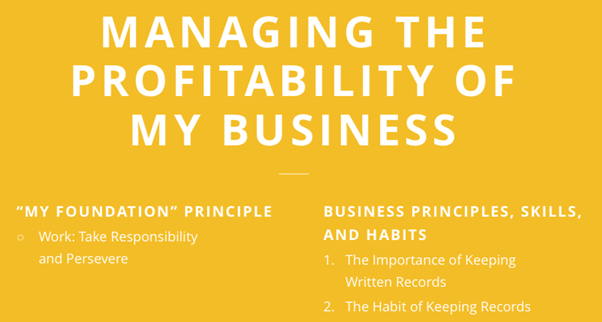
Watch the recorded session from Jan 2025 HERE
Share with the Group
What were the results of your attempts to Make-A-Sale (last week’s homework)?

Read: Great and marvelous events seem to motivate us, but small things often do not hold our attention. For example Alma said, “By small and simple things are great things brought to pass.” Rotary club members are known as “People of Action.” They take action related to Rotary’s areas of focus, including fighting disease, growing local economies, and protecting the environment.
Discuss: What “small things” do some business owners sometimes forget that cause serious problems for their business?
Read: Successful business owners are well organized and keep track of their financial details. For your business to succeed, it’s essential that you keep good financial records. Without good records, how will you know if your business is profitable? How will you know if you’ve been paid by all of your customers? How will you know your total expenses? In this chapter, we will learn about the importance of keeping good financial records.
We will learn about the term revenue, which refers to the money a business receives from selling services or products to customers. We will also learn about the term expense, which refers to the money spent by a business to obtain services or products. During the week, we will track our business revenue and expenses to see if we are making a profit.
ACTIVITY (5 minutes)
Read: A Revenue and Expense Log (sometimes called an Income and Expense Log) is a common and important business form. The main purpose of the log is to record every time money comes in and goes out of your business. Another purpose is to help you keep business and personal finances separate (We will study this in Chapter 7). It’s essential that you use it every day.
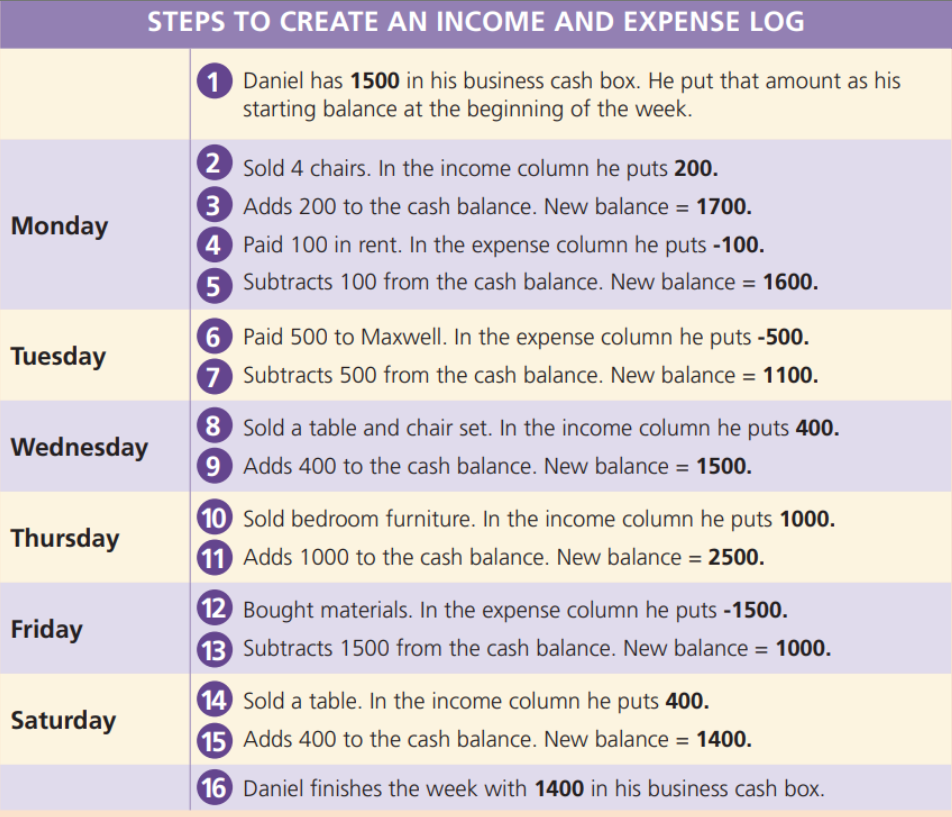
Daniel wrote down his income and expenses every day. His income and expense log looked like this at the end of the week.
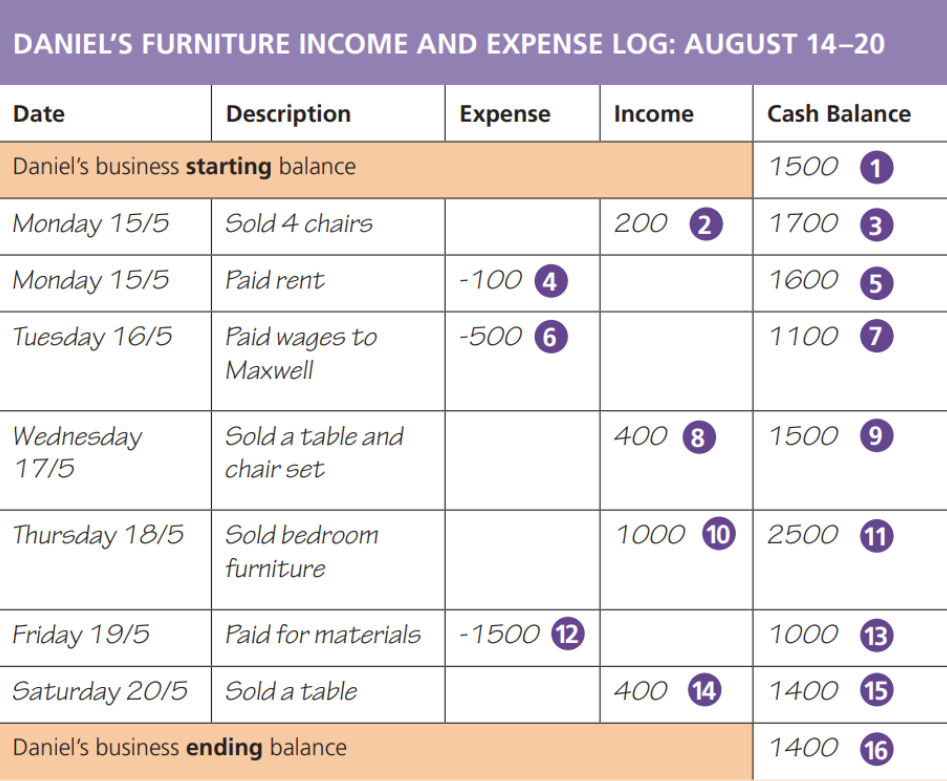
Step 2: As a group, discuss the following situation: At the end of the week, Daniel’s employee Maxwell says he hasn’t been paid. Assume that Daniel kept receipts for all of his business transactions during the week and then recorded all of his revenue and expenses. How do Daniel’s receipts and revenue and expense log help him resolve the issue of Maxwell saying he hasn’t been paid?
CREATING A REVENUE AND EXPENSE LOG
Read: To know if your business is profitable, you need to create an income statement. To create an income statement, you first need to have a revenue and expense log.
ACTIVITY (15 minutes)
You’ve seen how Daniel kept a revenue and expense log. Now, work with a partner to create a revenue and expense log and an income statement for Frank. If you need help filling out the revenue and expense log or the income statement, see the answer key on the page after.
Step 1: Review Frank’s revenue and expenses in the list of weekly activities below. Transfer his revenue and expenses onto the revenue and expense log on the top half of the next page.

Step 2: Complete a revenue and expense log for Frank’s upholstery business (below).
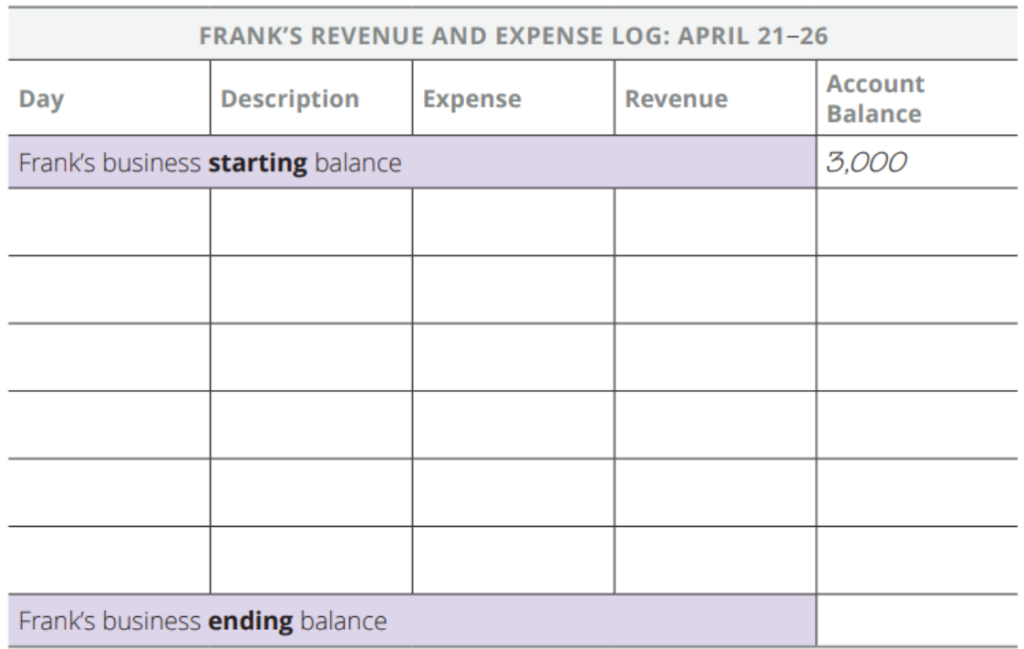
Check your answers using the answer key on the following page.
Answer Key:
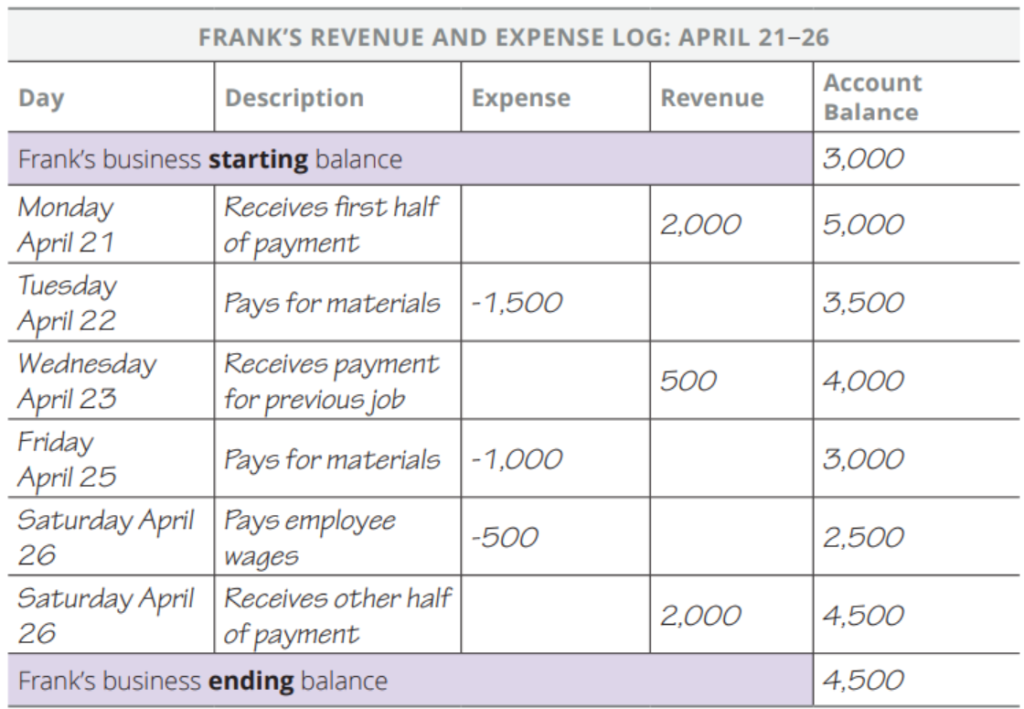
Step 3: As a group, discuss what you learned about Frank’s business from reviewing his Revenue and Expense Log.
Read: You need to record every sale and expense for your business every day. Your tool should be easy to use and accessible. Some business owners start by using a notebook and folders to record their receipts daily. These owners copy their notebook and receipts into a spreadsheet every night. Most owners will progress to more advanced record-keeping tools, such as digital applications (apps) and software packages, as their businesses grow.
Discuss:
○ What tools are you aware of that can help manage the financial details of your business?
MY COMMITMENTS
Ⓐ I will use the revenue and expense log (below) or the online template every day to track the sales and expenses from my business or the test products I am selling to learn more about the market and customers I plan to serve.
Revenue and Expense Log in Google Spreadsheet

